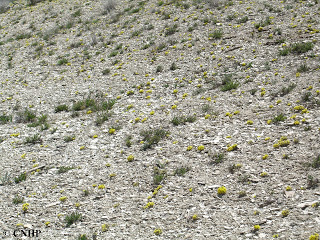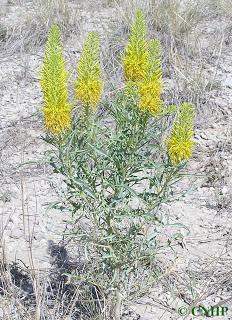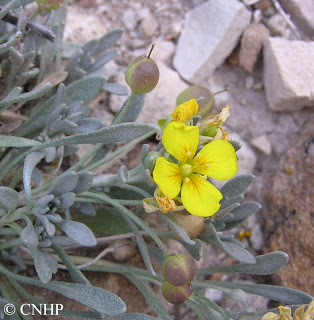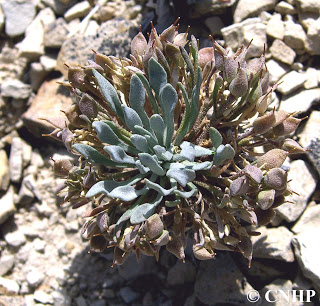By Karin Decker

is for Brassicaceae
 Brassicaceae is the third most frequent family on the list of rare plants tracked by CNHP. This is the mustard family, formerly known as Cruciferae, for the cross-shaped, four-petaled flowers that distinguish its member species. Most people are familiar with common cultivated species in this family including broccoli, cabbage, cauliflower, and of course, that ubiquitous condiment, mustard.
Brassicaceae is the third most frequent family on the list of rare plants tracked by CNHP. This is the mustard family, formerly known as Cruciferae, for the cross-shaped, four-petaled flowers that distinguish its member species. Most people are familiar with common cultivated species in this family including broccoli, cabbage, cauliflower, and of course, that ubiquitous condiment, mustard.
CNHP tracks more than 50 rare species in the mustard family, including what may be the rarest of all Colorado plants, Draba weberi. Our rare species are found in many different habitats, from lower elevations on the plains up to the highest alpine areas.
Most members of the mustard family are small and not particularly showy unless accompanied by several thousand of their closest relatives.


A couple hundred individuals of Lesquerella congesta (Dudley Bluffs bladderpod), trying to put on a show. Not really working, is it.
One exception is the desert prince’s plume, Stanleya pinnata, a common component of the spring flower show in desert areas.

Stanleya pinnata showing off.
As with the milkvetch genus (Astragalus), mustard family species are identified by the characteristics of their fruits. In fact, fruits of this family have a special name: silique. So, if you want to key out a mustard, remember to get a sample of the fruits or you won’t get far.

Fendler’s bladderpod (Lesquerella fendleri), with a nice view of both the four-petaled flower and the inflated silique.

Dudley Bluffs bladderpod with a fine crop of fruit – the whole plant is about 2 inches across. Hard to believe something this small can make so many fruits!
Not all mustard-family species have yellow flowers – we just didn’t have many good pictures of species with other colors, which include white, purple or pink flowers.




